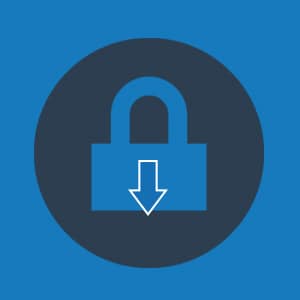The most convenient way for every household member to access the internet via different devices is through WIFI. In order to have WIFI, you need a WIFI router or an access point. As much as this is a convenient way, it poses some risks that can affect everyone connected to the router. For instance, an unauthorized user can connect to the WIFI and use it through what is called piggybacking. If it’s a malicious user, a lot of data can be at risk and more attacks and threats such as blackmail, identity fraud and even spread of malware may follow. This is why you need to secure your WIFI. Below are ways in which you can make sure your personal WIFI is safe;
 更改默认设置
更改默认设置
Default settings include the SSID name, passwords and other settings. To secure your WIFI, ensure you use a strong password which only the members that are allowed to connect should know. Open WIFI is an invitation for anybody who is within range of the access point/ router. The other setting you should change is the SSID name – this is the name that the WIFI access point displays. Most routers have their account information online and based on the default SSID name; a malicious user can gain access to your WIFI network.
过滤器连接装置
Routers have the capability of deciding which devices are allowed to connect to it. This is done by filtering the MAC addresses – a MAC address is like a hardware IP address. Network devices use network interface cards (NIC) to connect to the internet. These cards have physical addresses that are used to identify the device on a network. These physical addresses are known as MAC addresses. Unlike IP address, MAC addresses are usually in a pair of 6 digits separated by ‘:’ Here is an example, a1:b2:c3:d4:e5:f6. When you filter MAC addresses, you specify what addresses are allowed to use your WIFI. Most devices have these addresses under ‘about device’ section. In windows, type ‘ipconfig/all’ on command prompt to know your MAC address.
更新/升级
大多数路由器都允许您将固件更新到最新版本。更新通常包含修补程序,可以解决漏洞问题,还能修复其他错误和缺陷。
 在路由器上安装 VPN
在路由器上安装 VPN
Lastly, you can enhance the overall security of your WIFI by installing a VPN. Most VPN providers have tutorials and guides on how to install a VPN on your router. But for this work, your router must meet the requirements of supporting a VPN connection. You can as well as by a VPN ready router. Here what you gain when you install a VPN on your router;
- Overall security and privacy – a VPN provides security via encryptions and also assigns you a new IP address. These encryptions ensure that your internet traffic is safe from prying eyes. Also, you will utilize effectively the simultaneous connections offered by many VPN providers.
- Internet of things (IoT) will be covered – VPN providers don’t have VPN customs apps for smart devices such as a fridge and other Smart TVs. Installing a VPN on your router means everything that connects to the internet via the router is protected even if it doesn’t support a VPN.
Besides overall protection, installing a VPN on your router may have some downsides such as traffic between your device and the router is not protected and you might lose some smart home features such as smartly controlling devices. Also, if you don’t have a powerful router, you might experience a drastic drop in speed due to a drop in router performance. This is because encryption requires a significant amount of computing power.
 更改默认设置
更改默认设置 在路由器上安装 VPN
在路由器上安装 VPN

